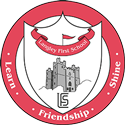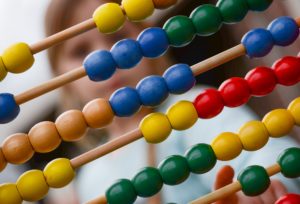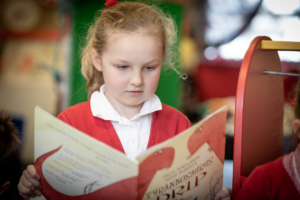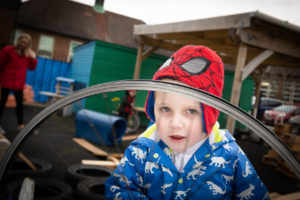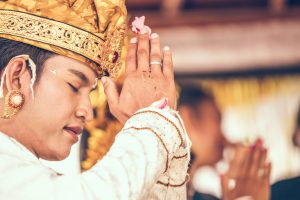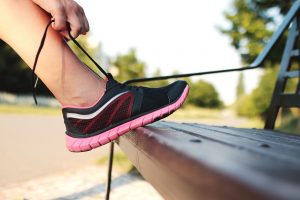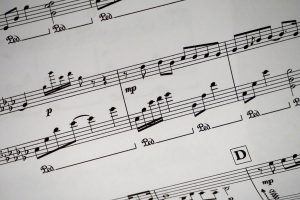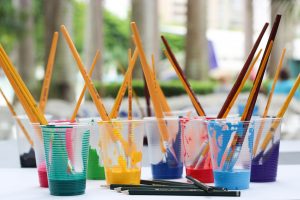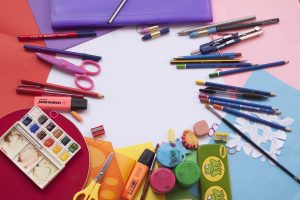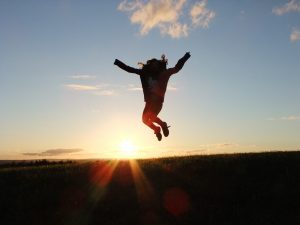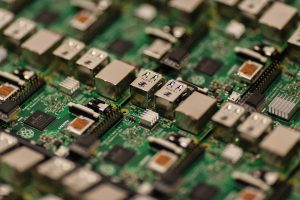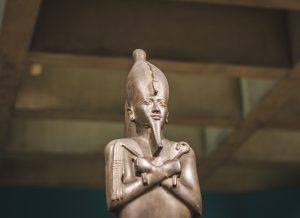Music
Purpose of study
Music is a universal language that embodies one of the highest forms of creativity. A high quality music education should engage and inspire pupils to develop a love of music and their talent as musicians, and so increase their self-confidence, creativity and sense of achievement. As pupils progress, they should develop a critical engagement with music, allowing them to compose, and to listen with discrimination to the best in the musical canon.
Aims
- perform, listen to, review and evaluate music across a range of historical periods, genres, styles and traditions, including the works of the great composers and musicians
- learn to sing and to use their voices, to create and compose music on their own and with others, have the opportunity to learn a musical instrument, use technology appropriately and have the opportunity to progress to the next level of musical excellence
- understand and explore how music is created, produced and communicated, including through the inter-related dimensions: pitch, duration, dynamics, tempo, timbre, texture, structure and appropriate musical notations.
Prior learning | Prior learning | Year 1 | Year 2 | Year 3 | Year 4 |
|---|---|---|---|---|---|
Join in with singing songs and rhymes. | Listen carefully when singing rhymes with a grown up. | TT: To listen to music with sustained concentration. | TT: To listen with concentration and understanding to a range of high-quality live and recorded music. | TT: To listen with direction to a range of high quality music. | TT: To confidently recognise a range of musical instruments and the different sounds they make. |
Join in with dancing and ring games.
Sing some familiar songs. | Have favourite songs and dances Can tap, shake, scrape and hit | TT: To find the pulse whilst listening to music and using movement. | TT: To build an understanding of the pulse and internalise it when listening to a piece of music. | To use musical words (the elements of music) to describe a piece of music and compositions. | TT: To confidently recognise and explore a range of musical styles and traditions and know their basic style indicators. |
Begin to move with rhythm. | Sing songs, make music | TT: To use correct musical language to describe a piece of music. | To sing/clap, pulse increasing or decreasing in tempo. | To use musical words to describe what they like and dislike. | To start to identify the character of a piece of music. |
Tap out simple repeated | Talk about the ideas and processes which have led to make own music. | TT: To recognise different instruments. | TT: To improvise a simple rhythm using different instruments including the voice. | To recognize the work of at least one famous composer. | To describe and identify the different purposes of music |
Make lots of noises with |
| To use instruments to perform. | To play simple rhythmic patterns on an instrument. | TT: To confidently recognise a range of instruments. | To begin to identify with the style of work of Beethoven, Mozart and Elgar. |
I move around in different ways
|
| To choose sounds to represent different things. | TT: To understand that timbre describes the character or quality of a sound. | TT: To find the pulse within the context of different songs/music with ease. | TT: To use musical language to appraise a piece or style of music. |
Sometimes I dance and jump up and down when I hear music. |
| TT: To discuss feelings and emotions linked to different pieces of music. | TT: To understand that texture describes the layers within music. | TT: To understand that improvisation is when a composer makes up a tune within boundaries. | To explain the place of silences and say what effect it has. |
Sing songs and change/adapt songs. |
| To say whether they like or dislike a piece of music. | TT: To understand that structure describes how different sections of music are ordered. | To create accompaniments for tunes. | TT: To copy increasingly challenging rhythms using body percussion and un-tuned instruments where appropriate. |
Know how to make up own songs |
| TT: To begin to understand that the rhythm is a mixture of long and short sounds that happen over the pulse. | TT: To begin to describe a piece of music using a developing understanding of the interrelated musical dimensions. | TT: To understand that composition is when a composer writes down and records a musical idea. | To perform a simple part rhythmically. |
|
| To make a sequence of sound. | To listen out for particular things when listening to music. | TT: To sing songs with multiple parts with increasing confidence. | To improvise using repeated patterns. |
|
| TT: To listen to, copy and repeat a simple rhythm or melody. | TT: To use his/her voice expressively and creatively by singing songs and speaking chants and rhymes with growing confidence. | To sing a tune with expression. | TT: To sing as part of an ensemble with confidence and precision. |
|
| To clap short rhythmic patterns. | To sing and follow the melody (tune). | TT: To play and perform in solo or ensemble contexts with confidence. | To sing songs from memory with accurate pitch. |
|
| TT: To understand the pitch describes how high or low sounds are | To improve own work. | To play clear notes on instruments. | TT: To play and perform in solo or ensemble contexts with increasing application. |
|
| TT: To understand that tempo describes how fast or slow the music is. | TT: To develop an understanding of melody, the words and their importance in the music being listened to. | To create repeated patterns with different instruments. | TT: To develop an understanding of formal written notation which includes minims and quavers. |
|
| TT: To understand that dynamics describe how loud or quiet music is. | TT: To sing a song in two parts. | To combine different sounds to create a specific mood or feeling. | To use notations to record and interpret sequences of pitches. |
|
| TT: To learn and perform chants, rhythms, raps and songs. | TT: To use tuned and un-tuned classroom percussion to compose and improvise. | To improve own work; explaining how it has improved. | To use notations to record compositions in a small group or on own. |
|
| To use own voice to speak / sing / chant. | To perform simple patterns and accompaniments keeping a steady pulse. | TT: To develop an understanding of formal, written notation which includes crotchets and rests. | TT: To listen and recall sounds with increasing aural memory. |
|
| TT: To learn to follow the conductor or band leader. | To use symbols to represent sounds. | To use different elements in own compositions |
|
|
| To follow instructions about when to play or sing. | TT: To play instruments using the correct techniques with respect. | To compose melodies and songs. |
|
|
| TT: To sing songs musically and understand how to warm up and project the voice whilst demonstrating good posture. | To make connections between notations and musical sounds. | TT: To begin to listen to and recall sounds with increasing aural memory. |
|
|
| To make different sounds with own voice and instruments. | TT: To practise, rehearse and present performances to audiences with a growing awareness of the people watching. |
|
|
|
|
| TT: To experiment with, create, select and combine sounds using the inter-related dimensions of music. |
|
|
|
|
| To order sounds to create a beginning, middle and end. |
|
|
Spiritual
Music supports spiritual development by encouraging through the experience and emotion of responding to performing, listening and composing music. We encourage our pupils to express their feelings verbally and in written form to improve their levels of articulacy. Where pupils are sensitive about expressing their feelings we nurture the confidence to do this by creating a supportive environment.
Moral
Music supports moral development by encouraging pupils to engage in critical discussions of musical performances and dramas/presentations from other childen and also visiting professionals. Where there is a specific cultural or social reference that is explicit in the work examined we encourage pupils to reflect upon this. Where pupils present their own work we ensure fair and objective assessment and evaluation of their work.
Social
Music supports social development with children collaborating routinely in group tasks where they take responsibility for their own learning outcomes and progress. We encourage the skills of independence, resilience and time management. Where they engage in group tasks we build a sense of unity which leads to them addressing their individual abilities and strengths and learning to build upon these collaboratively.
Cultural
Music supports cultural development by encouraging a respect and deep appreciation for cultures around the world that have contributed to the development of our current popular musical styles. This philosophy also underpins our selection of music for performance events whether they are informal or formal occasions. We encourage children to create their own music and to incorporate different musical influences in their own composition. We use a wide variety of instruments from around the world to enrich the cultural experiences of our children.
